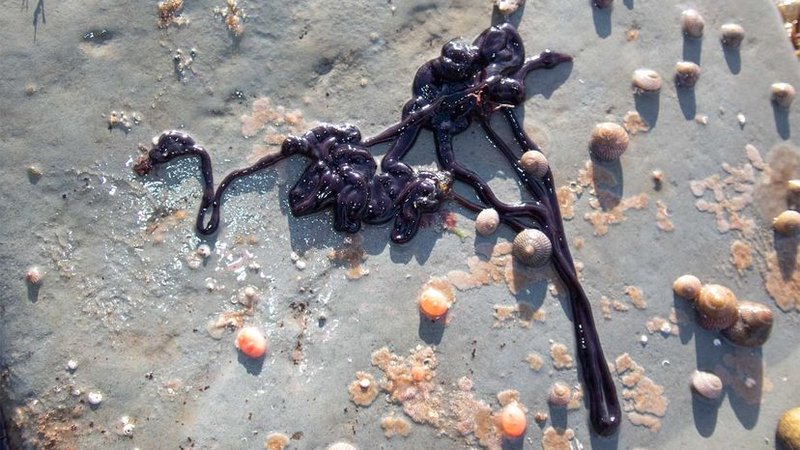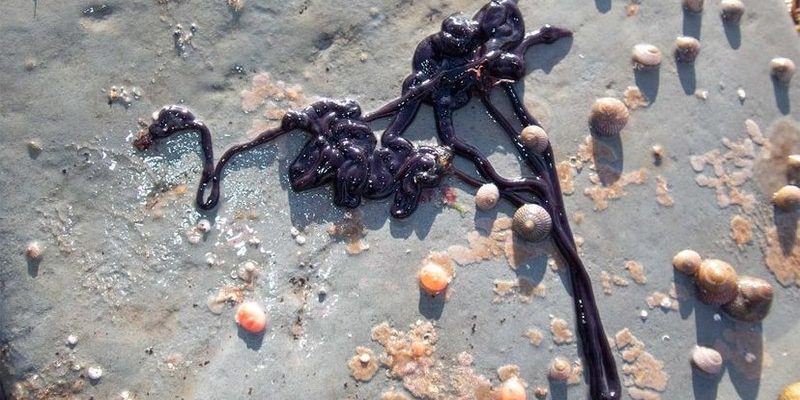
Imagine you’re at the beach during a storm. The wind howls, and the waves crash furiously against the shore. Now, picture the bootlace worm, nestled within the sand or hiding among rocks, feeling the ground shift as the surge approaches. These creatures might not have the biggest stakes in the storm, but their survival tactics are both intriguing and vital to the health of their ecosystem. Let’s dive into how bootlace worms adapt to these tumultuous times and what they teach us about resilience.
What Is a Bootlace Worm?
Bootlace worms, scientifically known as *Lineus longissimus*, are remarkable creatures. They can grow up to an astonishing length—sometimes over 30 meters! You might picture a spaghetti noodle, but these worms are slimy and soft, living in coastal environments. They often find their home in shallow waters, burrowing into the sand or hiding in rocky crevices.
These worms have a unique feeding strategy. They’re not just lurking around for fun; they are predators. Bootlace worms feed primarily on small invertebrates. They use a sticky substance to capture their prey, making them effective hunters despite their slender, unassuming appearance. Understanding their behavior during storm surges reveals how they cope with intense natural forces while fulfilling their role in the marine food web.
Storm Surges and Their Impact
Storm surges are rapid rises in sea levels due to strong winds and atmospheric pressure changes during storms. Think of it as nature’s way of shaking things up. For marine life, including bootlace worms, these changes can be both a challenge and an opportunity. The surge can displace sediments, change water temperature, and wash in nutrient-rich materials—all of which can influence a worm’s behavior.
For bootlace worms, the approach of a storm surge triggers several responses. They might burrow deeper into the sand to avoid being washed away or exposed to predators that come with the rising waters. You might wonder, how do they know to do this? Bootlace worms have sensory receptors that detect changes in water pressure and movement, allowing them to react quickly to their shifting environment.
Behavioral Adaptations to Storm Conditions
When a storm surge hits, bootlace worms showcase some fascinating behavioral adaptations. One of the primary strategies is burrowing. They dig deeper into the substrate, using their muscular bodies to maneuver through the sand. This not only protects them from the upheaval of the storm but also helps them maintain their vital moisture levels.
Another behavior observed is their **increased activity**. As the water churns above them, bootlace worms often become more mobile. They might stretch out to relocate if their current burrow becomes too unstable. Imagine a person trying to find a safe spot in a crowded room; that’s akin to what these worms do. This search for a secure location is crucial for their survival and is a clever response to the chaotic changes happening above them.
How Storm Surges Affect Their Feeding
Storm surges don’t just impact where bootlace worms hide; they also affect how they eat. With the turbulence and sediment disturbance, the availability of their prey changes significantly. Sometimes, storm surges can bring in new food sources. As waters mix, smaller organisms may be flushed into the areas where bootlace worms reside.
However, the storm’s intensity can also make hunting difficult. Visibility decreases, and food may be scattered widely. During these times, bootlace worms may rely more on stored energy, waiting out the storm—like a person holding back on eating their snacks during a long wait. This ability to adapt their feeding habits helps them survive when conditions become less favorable.
Ecological Importance of Bootlace Worms
Bootlace worms might seem unassuming, but they play a crucial role in their ecosystems. They are part of a larger community that includes various species of fish and other marine organisms. By serving as both predator and prey, bootlace worms help maintain the balance in their environment.
During storm surges, the presence of bootlace worms can also contribute to sediment health. Their burrowing helps aerate the sand, allowing nutrients to circulate and supporting the growth of other organisms. This is vital for the overall health of coastal ecosystems, demonstrating how even the smallest creatures can impact their surroundings.
Research and Future Implications
Scientists are increasingly interested in studying the behavior of bootlace worms during extreme weather events, like storm surges. By observing how these creatures adapt, researchers can gain insights into the resilience of marine life in the face of climate change.
Understanding the behavior of bootlace worms not only helps us appreciate their unique traits but also acts as a proxy for the health of larger marine ecosystems. As we face more frequent and intense storms, knowing how these organisms cope will provide clues to help preserve their habitats.
Final Thoughts
The bootlace worm, with its winding form and vibrant colors, may not be the first creature that comes to mind during storm discussions, but its survival techniques during storm surges are nothing short of impressive. From burrowing deeper to adjusting feeding habits, these worms showcase the resilience of life beneath the waves.
As we continue to explore the intricate relationships within marine ecosystems, the behaviors of creatures like the bootlace worm remind us of nature’s ability to adapt and thrive, even in the face of challenges. Next time a storm rolls in, remember that below the surface, life is finding a way to weather the storm.

